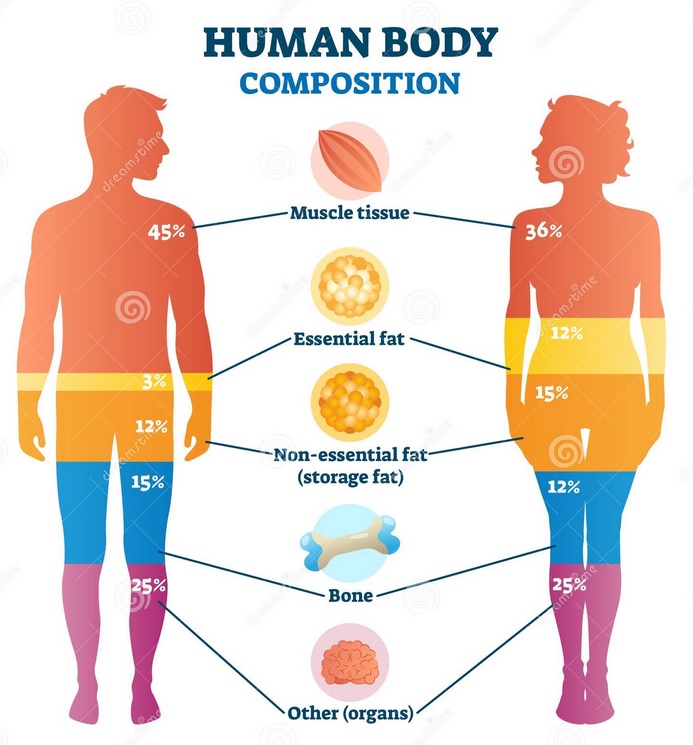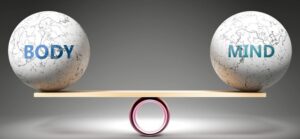This article is the first in the series of three articles. The first article will cover basics of “Optimal body composition” and simple steps we can take to make changes to our body composition. The second article will focus on Proteins – basics of science, ways to improve intake and why proteins are important and finally the third article will focus on Fats and Carbohydrates – basics of science, myths around fats and importance of daily intake of essential fats and carbs.
Over the last few years there has been an increasing emphasis on increasing the protein content of our diet. So much so that fats have been designated as the “bad guy” in the story. Going Fat Free has become the new mantra which in my opinion is incorrect. Even Cristiano Ronaldo one of the fittest man on the planet has 8-10% body fat. I think this “Fat is bad and protein is good” storyline misses the point. Yes, excess fat is bad for our health but fats below a certain limit is worse. Fats are required by numerous important functions of the body which I have explained below. I think the question we should ask ourselves is what is the right body composition one should aim for, what is my current baseline and therefore what is it I should increase/decrease in my food intake to get to the optimal body composition. Let’s dive into each questions separately.
What is an Optimal Body Composition?
Body composition helps us determine the amount of body fat vs. lean mass in our body. Before we talk about the optimal body composition I want to emphasize that fats are essential components of our body helping in digestion and energy metabolism. They help maintain the body temperature as well regulation and production of certain hormones. They also serve as an energy reserve if we are exercising beyond 20-30 minutes. The immune system is impaired if the body fats are too low. However excess fat in the body can be harmful for our overall health therefore it is important to monitor and maintain the body fat % below certain limits based on age.
According to American Council for Exercise the ideal body fat% for average men is in the range of 14-17% and for women in the range of 21-24%. These numbers also vary by age. The table below is applicable for middle age individuals.
| Men | Women | |
| Essential Fats | 2-5% | 10-13% |
| Athletes | 6-13% | 14-20% |
| Fitness Enthusiasts | 14-17% | 21-24% |
| Healthy average | 18-24% | 25-31% |
| Obese | 25% and above | 32% and above |
How do you measure body fat%?
There are numerous ways to measure body fat% with most common being DXA scan, skin fold thickness assessment and bioelectrical impedance. Most well equipped gyms have weighing scales which can also measure body fat%. There might be an error of 1-1.5% but it will give you a fair idea on your current levels of body fat.
Making changes to achieve optimal body composition
Once you understand your current baseline and target based on above table, the next step is to make changes to nutrition. This is the hardest part since it requires changing life long habits and beliefs as well as sustain the changes. There are few rules/actions which I think are good to remember:
Nutrition
- Weight management is simply about how much calories you consume minus the number of calories you use up during the day. Therefore, if you are looking to make changes in your weight then it is important to remember the equation (Weight Change = Calorie intake – Calorie Used)
- One gram of carbohydrate or protein provides on average four calories while one gram of fat provides nine calories. Therefore, you intake more calories per gram of fat vs. protein or carb.
- Ensure sufficient protein intake in your daily diet. Vegetarians need to be more mindful about this as there are limited number of good sources of protein in the vegetarian diet.
- At the same time certain amount of fats are essential in our daily diet. Please don’t aim to go “Fat Free”. That is not healthy as well. I will deep dive into Fats in Part 3 of this series.
- Making fruits, vegetables, nuts and seeds as the foundation of your daily diet helps build a base with a good mix of micro and macro nutrients. Always ask yourself whether I had sufficient amount of these foundational food today and only then move up the hierarchy to other kinds of complex food.
Exercise
- Regular cardio helps reduce excess stored fats especially High Interval Intensity training (HIIT). Ensure 3-4 days of cardio (running, cycling, swimming, dancing etc.)
- Strength training is critical to keep healthy levels of muscle mass. More muscle helps improve metabolic rate therefore the body is able to burn fat even while you are not training. 2-3 strength training sessions even if short 30 minutes are good part of a healthy routine.
Sleep
- A good 7-8 hours of sleep allows us to be in a healthy state of mind to be able to implement all of the above. Lack of sleep not only impacts body function but also makes it harder for us to follow a nutrition and exercise routine. Never compromise on sleep.
These basics on body composition should be a good starting point but we also need to understand the key components of the food – Protein, Fats and Carbs and what role each one of these play in our body. As Article 2 in this series I will focus on Proteins.


